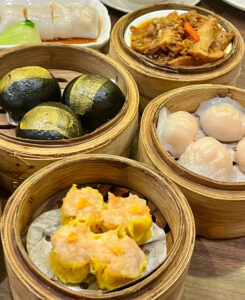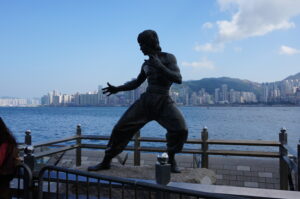- Home
- »
- about china
- »
- Chinese new year traditions: the interest facts to be discovered
Chinese new year traditions: the interest facts fot be discovered
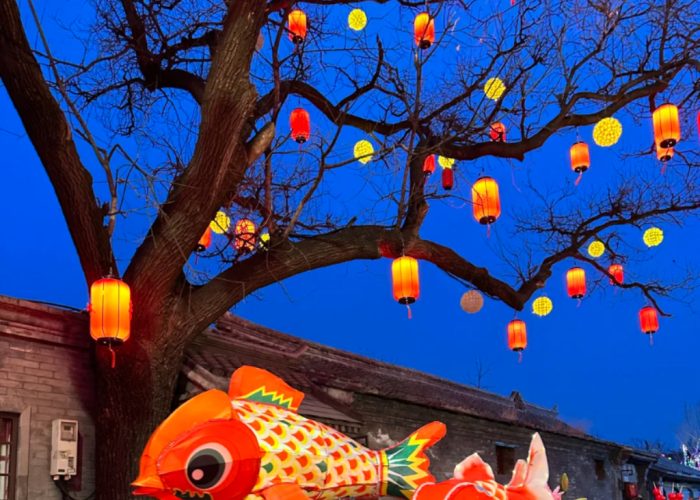
Chinese New Year traditions reveal fascinating cultural insights. While younger Chinese generations may be less strict about following traditional rules, certain essential rituals and customs continue to define this festive period. Let’s break down the key traditions to observe during the 6 days of preparations before New Year’s Eve and the 15 days of celebrations that follow
The Countdown Begins: Six Days of Preparation
Day 6: “Little New Year”
The preparations officially begin six days before New Year’s Eve, on the 24th day of the last lunar month. Known as “Little New Year,” traditional families start making dumplings and shopping for the upcoming festivities.
Day 5: Make the Tofu and the preparation of the new year food gala starts…
For some traditional families, this day is dedicated to making tofu from scratch. The process begins with soaking soybeans, followed by grinding and molding them using traditional tools. Unfortunately, these hands-on traditions are gradually fading among younger generations. Also from this day forward, families begin preparing the various dishes that will be served during the first days of the New Year…
Day 4: Kill pig and Cut the hair
In rural areas, families follow the age-old tradition of butchering the pig they’ve raised for an entire year specifically for New Year celebrations – ensuring the finest quality meat for all the holiday meals. The local markets buzz with shoppers, while hair salons are packed with people rushing to get their haircuts done. According to tradition, cutting your hair during the 15 days following New Year’s Eve is considered bad luck.
Day 3: Day of Window Flowers and Festival Foods
This day is dedicated to creating ‘窗花’ (window flowers) – intricate red paper cutouts that decorate windows with traditional designs. The character ‘Fu’ (福), meaning ‘happiness,’ is carefully cut out to stick on windows or front doors. This is also the day when southern Chinese families prepare rice cakes, while northern Chinese families make traditional Chinese steamed bread.
Day 2: The Big Cleanup and Ancestral visits
Just like spring cleaning in America, but with much more significance, this is the day when every Chinese household does a complete deep clean before the New Year. The whole house needs to be spotless – changing all bedding, taking out all trash, and cleaning every corner.
Back in my family, we were so thorough that we’d spend several days on this cleaning ritual. We’d scrub the floors until they sparkled – no dirt spot was allowed to stay!
Some families also use this day to visit their family graves if they’re nearby
New Year’s Eve: The Big Day
Decoration of Spring Couplets
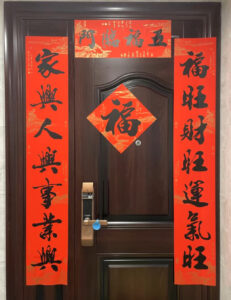
The day starts with hanging up traditional decorations called Spring Couplets (贴对联) – these are red banners with New Year wishes written in calligraphy. They’re placed on either side of the front door with a matching horizontal piece across the top.
Preparation of ‘’ Hong bao’’
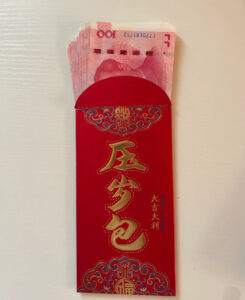
Then comes an exciting tradition for the kids – the red envelopes (hong bao 红包). Parents prepare these special envelopes containing money, known as “lucky money.” It’s more than just a cash gift – tradition says it helps protect children from bad luck in the coming year.
The Chinese New year dinner and Firecrackers
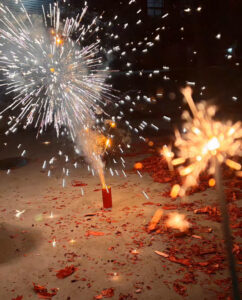 The kitchen becomes the heart of the home as everyone helps prepare the New Year’s Eve feast. Different regions have their own special dishes, and families might celebrate over lunch or dinner, depending on local customs.
The kitchen becomes the heart of the home as everyone helps prepare the New Year’s Eve feast. Different regions have their own special dishes, and families might celebrate over lunch or dinner, depending on local customs.
Before the meal, families light long strings of firecrackers – a tradition that’s now limited in many cities but still continues in rural areas. According to tradition, the noise drives away bad luck and welcomes good fortune.
The CCTV Spring festival gala
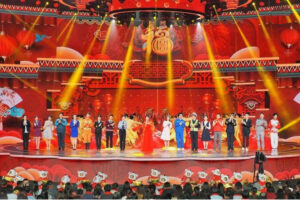 Evening brings a new tradition – families gather to watch the Chinese Central television’ s New Year’s Gala, China’s biggest TV event of the year. From 8 PM until midnight, everyone watches together while making dumplings or snacking. Some kids try their best to stay awake until midnight!
Evening brings a new tradition – families gather to watch the Chinese Central television’ s New Year’s Gala, China’s biggest TV event of the year. From 8 PM until midnight, everyone watches together while making dumplings or snacking. Some kids try their best to stay awake until midnight!
At the stroke of midnight, the sky lights up with fireworks everywhere (where permitted), marking the official start of the New Year.
There are also some special rules everyone follows on this day:
- No unexpected visitors – this is strictly family time
- Avoid saying anything negative or unlucky
- Best of all for kids – they are not allowed to be punished or yelled “
New Year’s Day Celebrations
First Day of the New Year: New Clothes, Family Visits & Red Envelopes
The first day of the Chinese New Year is a huge celebration when everyone wears their new clothes to symbolize a fresh start. While firecrackers (爆竹) are now banned in big cities, they used to create an amazing festive atmosphere in the old days.
This is also the day for ‘Bai nian’ – visiting relatives who live nearby to wish them a happy new year. For kids, it’s an exciting time to collect red envelopes (hong bao). The amount of money inside varies by region – in Guangzhou, 5 yuan is enough, while in my region of Sichuan, it can be as much as 1000 yuan (about $140), though the average is around 200 yuan ($28).
There are some fun traditions and superstitions for this day:
- No cleaning up (you don’t want to cleanup your good luck!)
- No hair washing (so you don’t wash away your prosperity!)
- Breakfast must be either dumplings or sweet rice balls (tang yuan)
- No taking out the trash (to avoid throwing away good fortune!)
The Following Days: Key Traditions
- Day 2: Married women visit their birth families with their family, most for the woman married far.
- Day 3: A day to honor ancestors by burning paper offerings. Traditionally, people stay home on this day and avoid visiting others
- Day 5: Special celebration to welcome the Gods of Fortune
The 15th day : The Grand Finale: Lantern Festival
The Chinese New Year celebrations reach their peak on the fifteenth day with the magical Lantern Festival. In southern China, families make sweet rice balls (tang yuan), while northern families eat dumplings. On this final day, families gather to watch the special Lantern Festival Gala on TV.
Cities are decorated with stunning light displays. And many cities even hold the lantern festival by decorating the streets with glowing lanterns in all shapes and sizes, creating a magical atmosphere.
At midnight, as far as it’s allowed, fireworks light up the sky for one last celebration, marking the end of the fifteen-day New Year festival.
And with this spectacular display of lights and family togetherness, Chinese New Year closes.”

